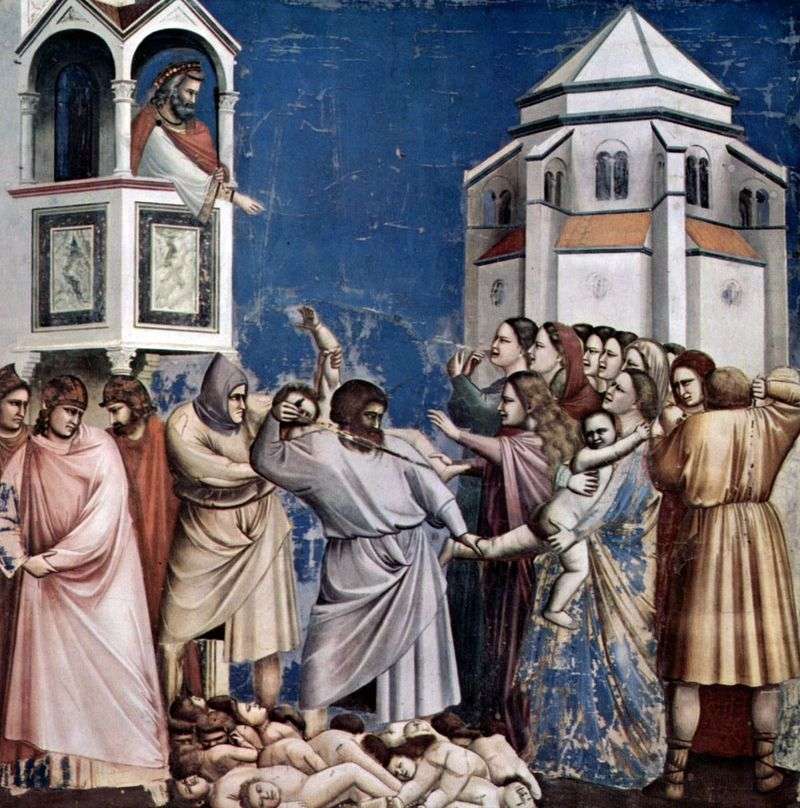
One of the main achievements of the Jottian art can be considered the intensive development in it of the qualities of maximum visual clarity, allowing to achieve exhaustive clarity of the meaning of the pictorial image. Compositions of Giotto at first sight open their content, so that we can immediately grasp the essence of the conflict and realize the nature of the roles of all the characters involved in it.
The graphic poetics of this composition are based on contrasts, on the explicit opposition of characters embodying the basic moral properties of the human person, serving as a kind of personification of virtues and vices. This consistently conducted opposition allows us to convey to us the idea of the eternal struggle of two forces – Good and Evil.
On the right in the form of a compact group are mothers, mourning the terrible fate of their children. Despair on their faces and in their gestures does not have the features of an individual experience, it is a kind of general formula of the extreme emotional heat of feelings. Their pathetic emotion is opposed by the hypocritical calm of Herod’s henchmen.
And, like the counterpoint of this tragic scene, in the very center of the composition towers figures of executioners, with some frightening determination carrying out their terrible business. The viewer immediately understands the ethical background of the whole scene, he does not have doubts about which of its participants is a villain and who is a victim.
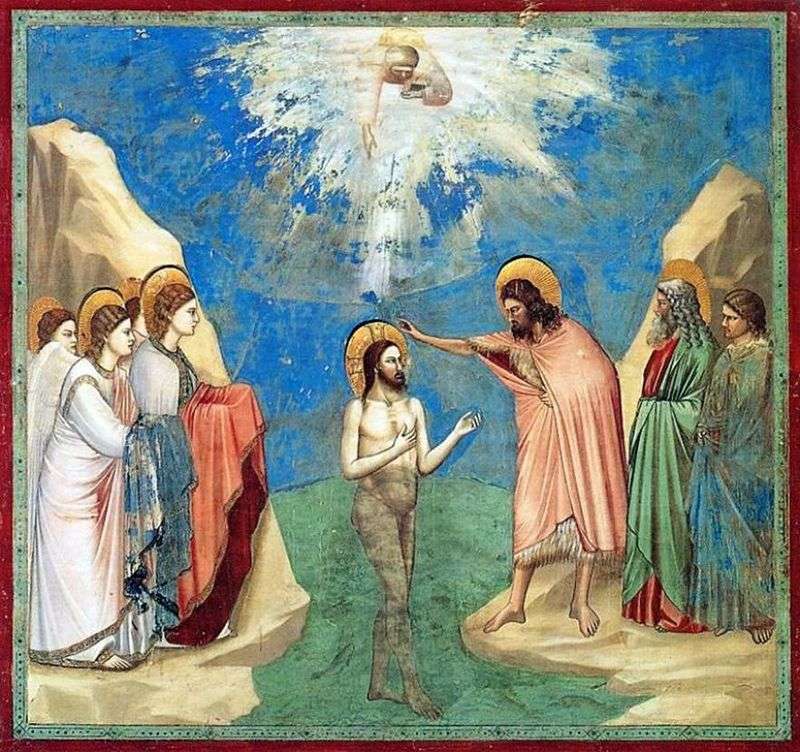 The Baptism of Christ by Giotto
The Baptism of Christ by Giotto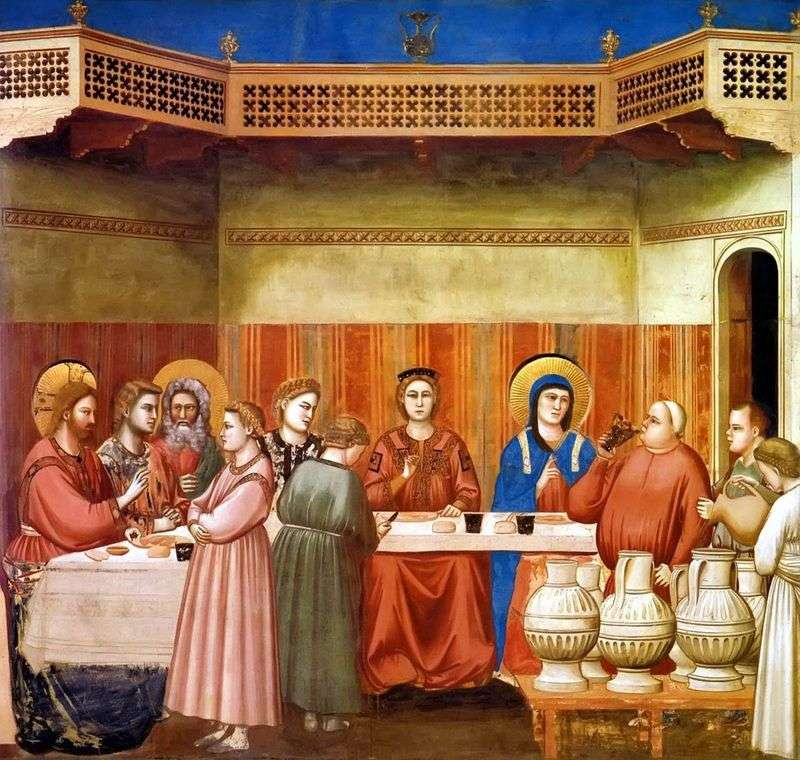 Marriage in Cana of Galilee by Giotto
Marriage in Cana of Galilee by Giotto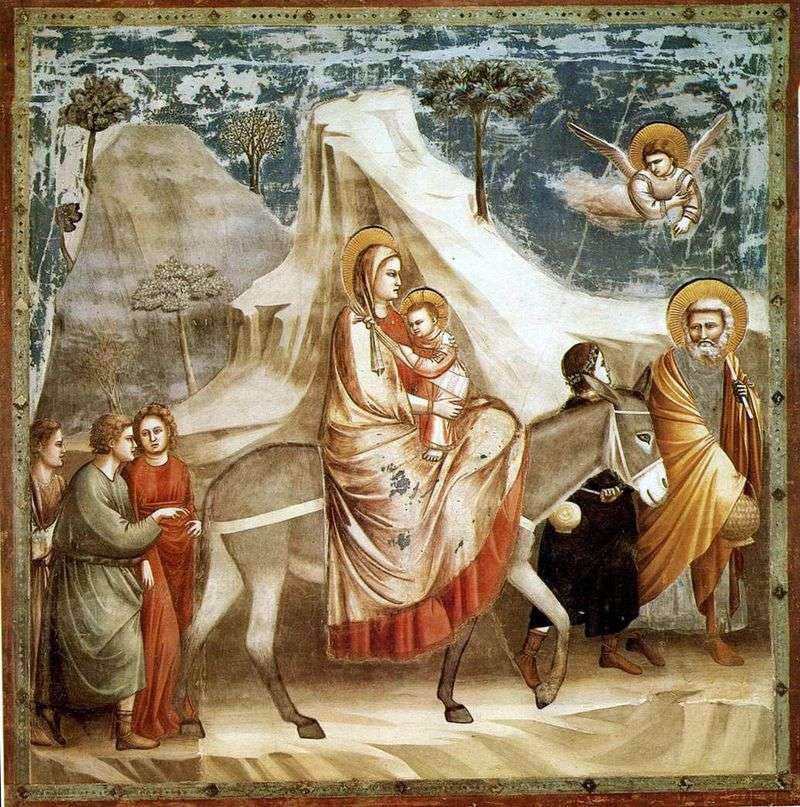 Escape to Egypt by Giotto
Escape to Egypt by Giotto Kiss of Judah by Giotto
Kiss of Judah by Giotto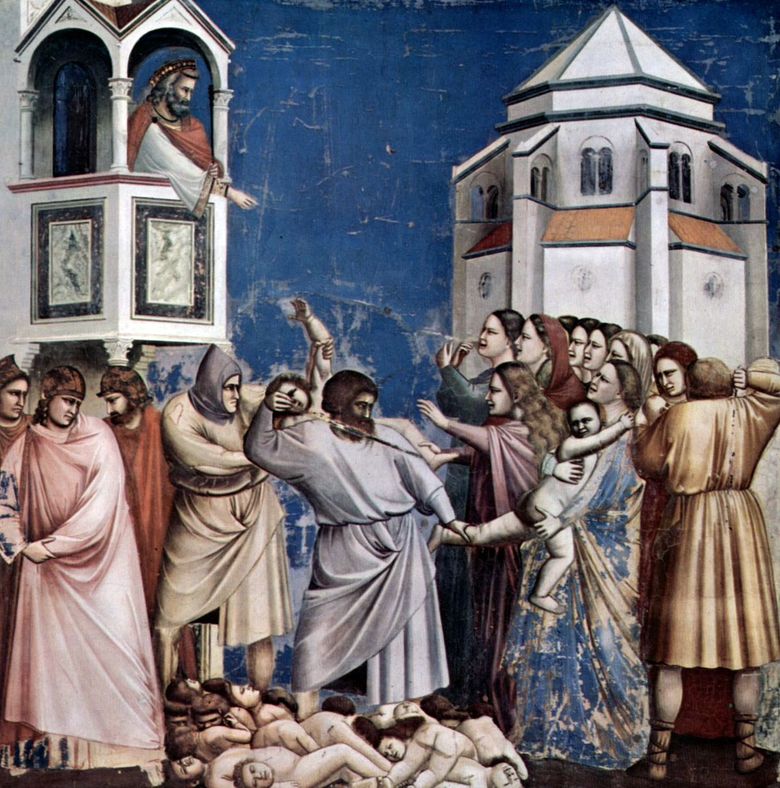 Battre les bébés – Giotto
Battre les bébés – Giotto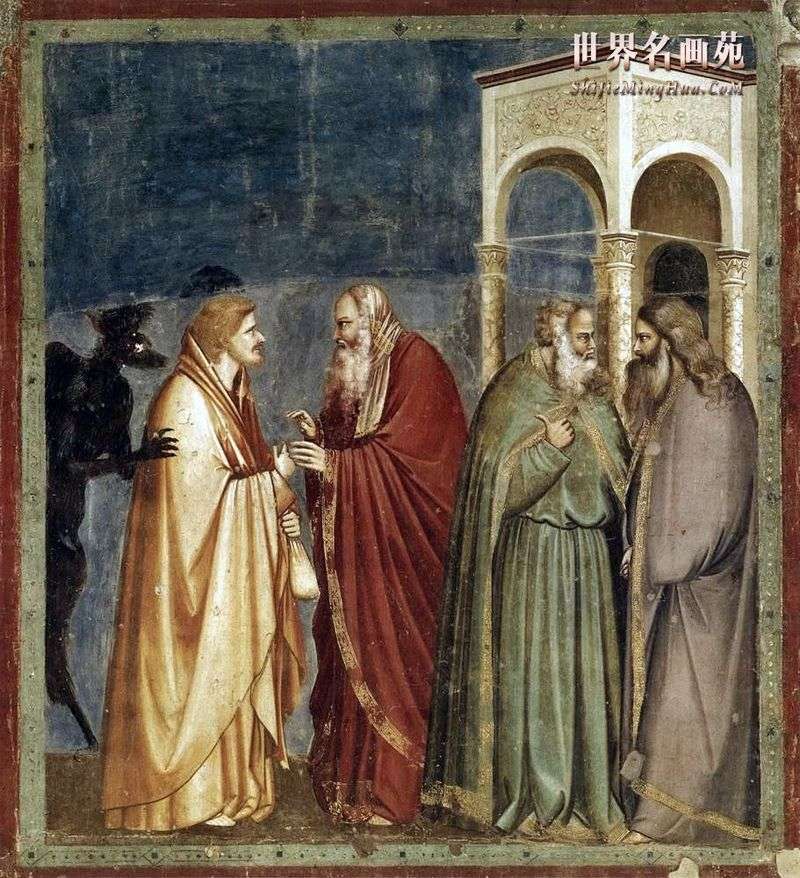 Judas betrayal by Giotto
Judas betrayal by Giotto Preaching to the birds by Giotto
Preaching to the birds by Giotto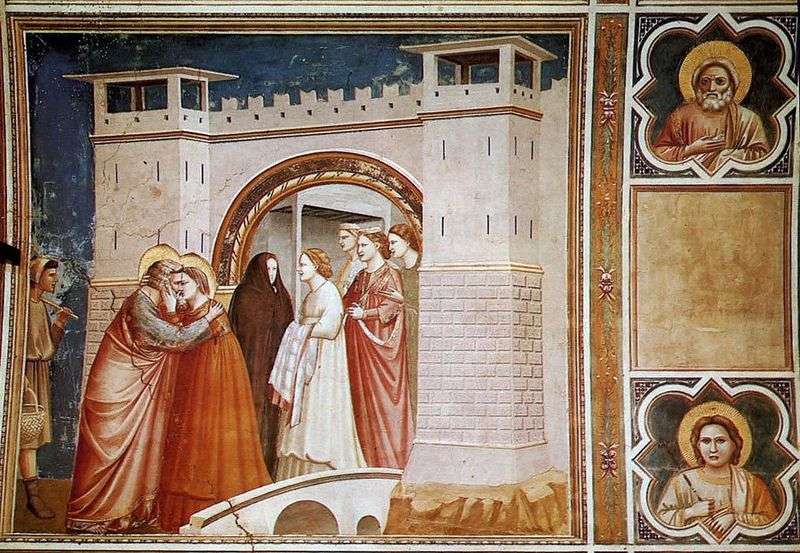 Meeting Anna with Joachim at the Golden Gate by Giotto
Meeting Anna with Joachim at the Golden Gate by Giotto